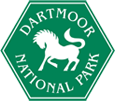Lowland Heathland
Around the edge of the Dartmoor Natural Area there are a few heaths lying below 250m and these are generally classed as Lowland Heath. This habitat has declined drastically over the last 200 years with only one sixth remaining. The UK holds 20% of the European total and Dartmoor’s lowland heathland is important nationally. The main examples are at Trendlebere Down, Roborough Down and Crownhill Down.
The characteristic species are heather, western gorse, bristle bent, cross-leaved heath and bell heather. In late summer there is a spectacular display of colour when the gorse and heather are in flower.
Stonechats and tree pipits are characteristic birds. The grayling, which feeds on grasses and green hairstreak which feeds on gorse are characteristic butterflies. Two birds of national concern for conservation which breed on Dartmoor are the nightjar and the Dartford warbler.
Trendlebere Down is part of the East Dartmoor Woods and Heaths National Nature Reserve. Some lowland heathland has been put into Environmental Land Management schemes, which pay farmers to manage habitats sustainably.
Threats to this habitat include over-grazing, abandonment and inappropriate burning regimes.
